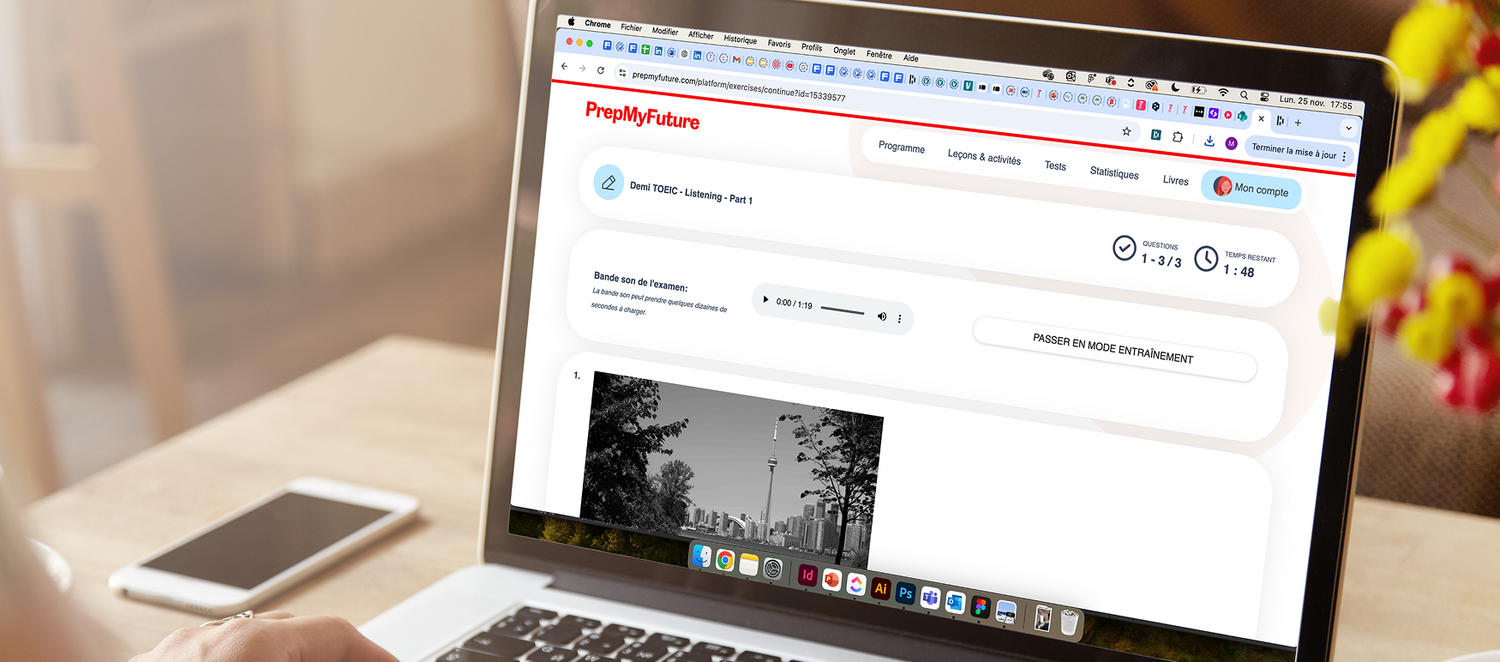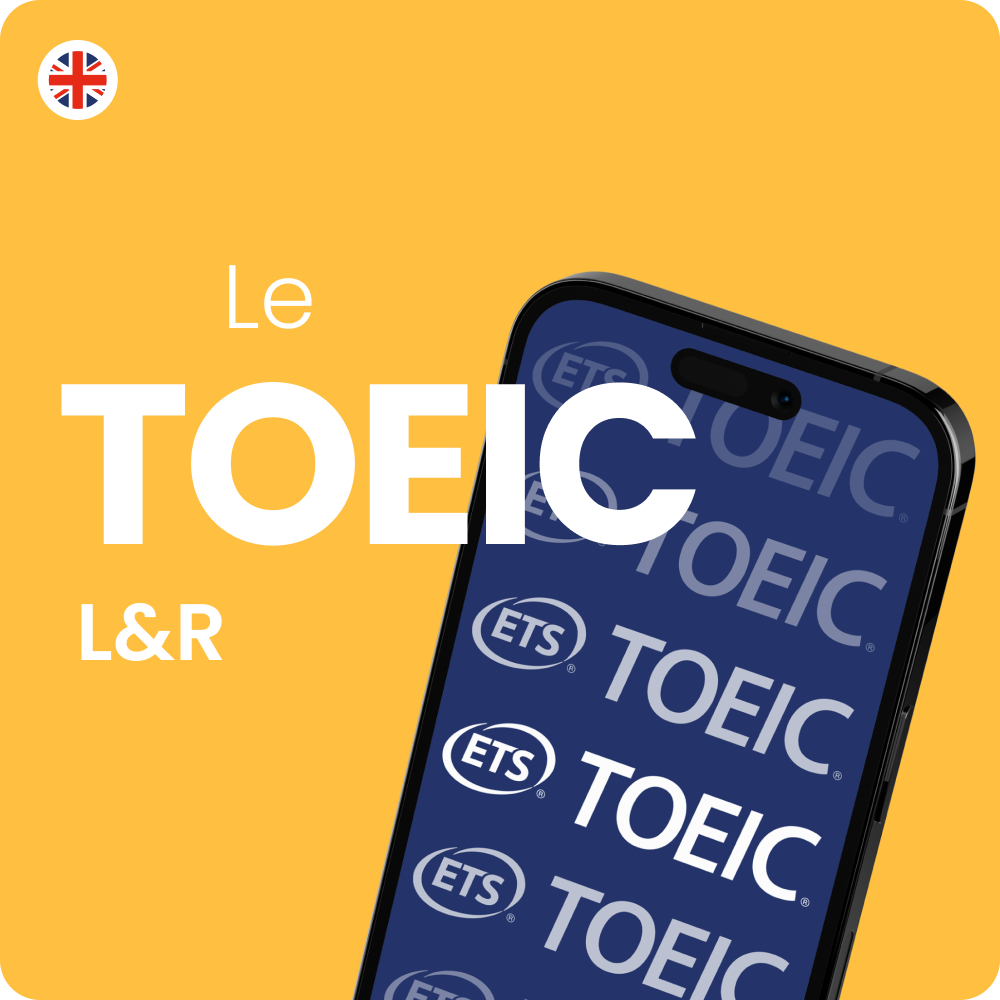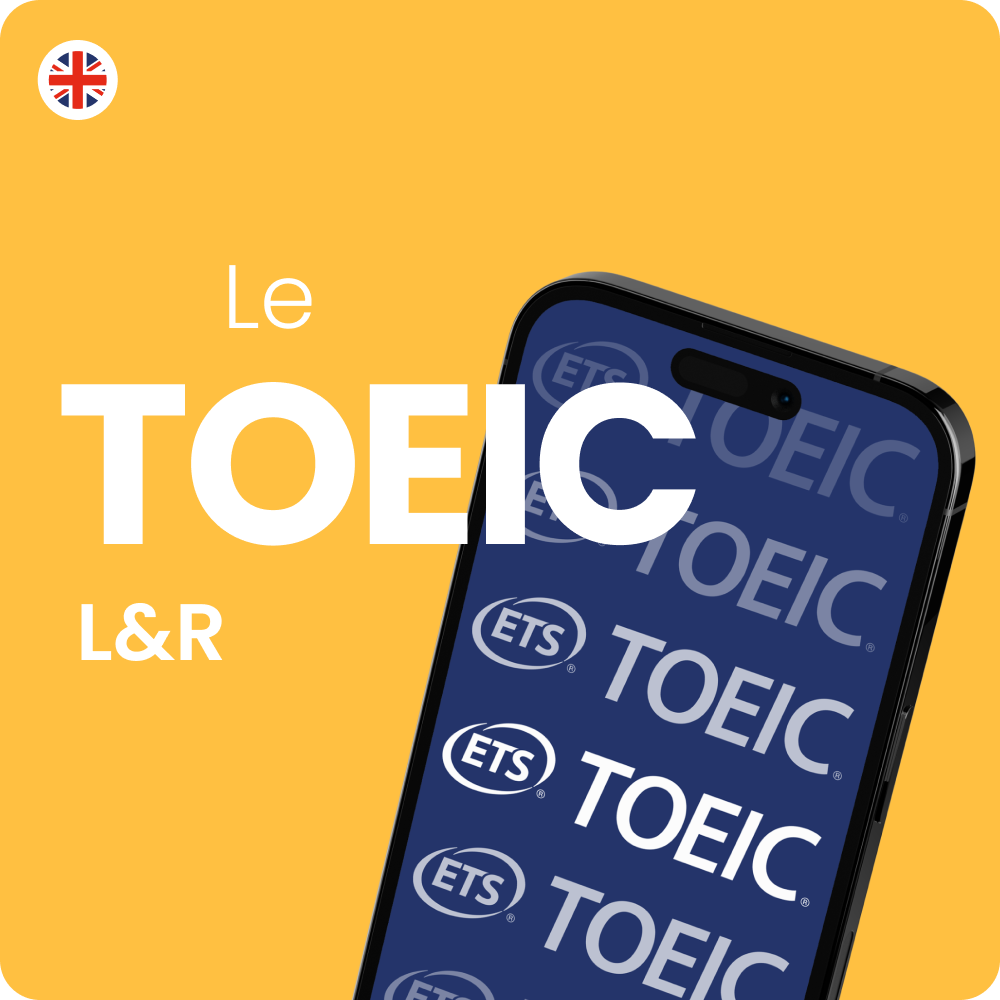TOEIC - Presentation
What is the TOEIC?
TOEIC - Presentation
The Test of English for International Communication (TOEIC) is a standardized, multiple-choice English language test. Widely recognized internationally, it assesses the ability of non-native English speakers to communicate in English in a business setting.
For students wanting to enhance their CV or for professionals wishing to improve their visibility, the TOEIC is the "must have" .
There are three forms of TOEIC:
- TOEIC Listening and Reading , the most widespread, it assesses oral and written comprehension for intermediate levels (A1 and C1). It is the most common.
- TOEIC Speaking and Writing , it assesses oral and written expression for intermediate levels (A1 to C1).
- TOEIC Bridge which assesses oral and written comprehension from beginner to intermediate level.
THE TOEIC Listening and Reading is the most recognized in higher education and business worldwide. Rated out of 990, most higher education institutions require a minimum score of 785. The TOEIC score is reliable for businesses that correlate it with CEFR levels.
Knowing the exam format and practicing time management is essential. The test is standardized with sample questions, so it's important to familiarize yourself with these questions and learn the solving techniques.
To find out in detail what the TOEIC test contains, go to this article: What does the TOEIC contain?

Discover the PrepMyFuture platform
Discover
PrepMyFuture
TOEIC Listening and Reading
Share

